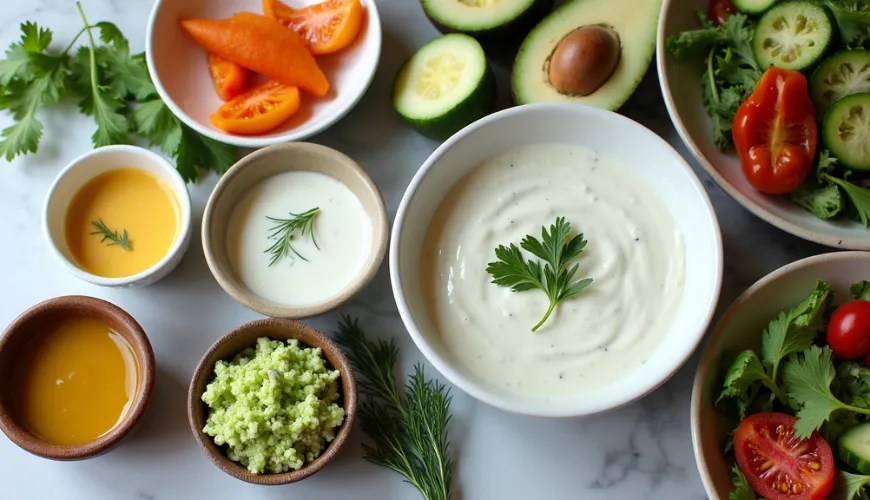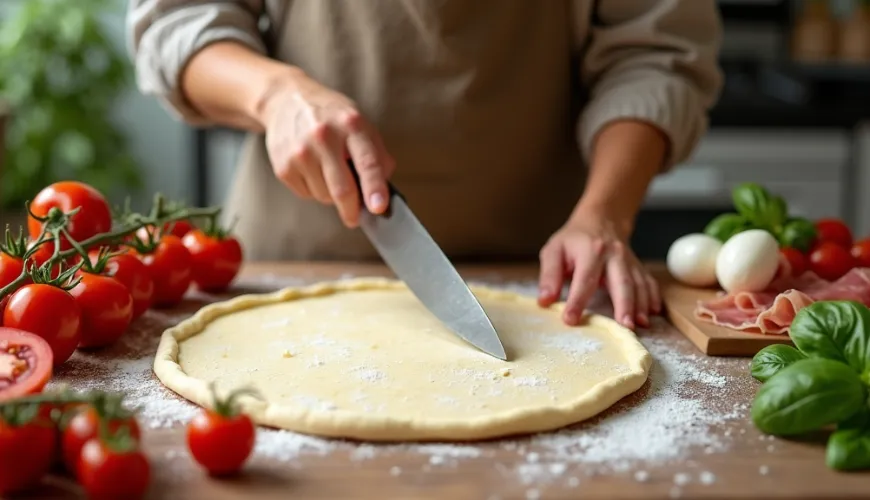
How to Prepare an Excellent Pinsa at Home Without Unnecessary Stress

What is pinsa and why is it winning the hearts of pizza lovers worldwide
In today's world, where more and more people are interested in quality ingredients and traditional methods, the gastronomic world is experiencing a small revolution—and its name is pinsa romana. If you haven't heard of it yet, it's not too surprising. This "pizza cousin" comes from the Rome area and has been quietly but steadily making its way onto our plates in recent years. Many who have tasted it claim that it is lighter, tastier, and more digestible than classic pizza.
So what exactly is pinsa? How does it differ from pizza? And how can you make it at home? The answers to these questions can be found right here.
Rediscovered Roman heritage
The word "pinsa" comes from the Latin verb "pinsere," which means "to press" or "to knead." This term describes the way the dough was traditionally shaped into an oval and irregular form. This is precisely what distinguishes pinsa from the round Italian pizza we are accustomed to.
However, pinsa romana has deeper roots than it might seem. Its origin dates back to ancient Rome, where simple flatbread was made from sprouted grains. The modern version of this delicacy was only rediscovered in the past two decades by Italian bakers who combined ancient principles with a modern approach to nutrition.
And this is where the story begins—a story that deserves the attention of anyone interested not only in taste but also in what they're putting on their plate.
Dough that will surprise you
The fundamental difference between pizza and pinsa lies in the dough. While pizza is usually made from a single type of flour—mostly wheat—pinsa dough is a mixture of wheat, rice, and soy flour. Sometimes chickpea flour or other legumes are added. The result is a dough with a lower gluten content that is much lighter, fluffier, and easier to digest.
Another advantage is the long fermentation time, which typically lasts from 24 to 72 hours. This method not only enhances the flavor but also allows enzymes to break down complex sugars and proteins, improving the digestibility and nutritional value of the final bread. Many people who feel heavy or have digestive issues with gluten after eating pizza find that pinsa causes them no problems. However, it is not a gluten-free option, which is important to keep in mind.
You might be surprised to learn that a finished pinsa weighs up to 40% less than a typical pizza—yet it still satisfies. This is due to the high water content in the dough (up to 80%) and its structure, which resembles focaccia but is much more airy.
What does pinsa taste like?
Unlike pizza, whose dough tends to be denser and sometimes tougher, pinsa is crispy on the outside and incredibly fluffy on the inside. Thanks to its oval shape and irregular edge, it appears more rustic and homemade. It is usually prepared in smaller sizes—ideal for one person—so it is easy to combine different types according to taste.
Pinsa often uses similar ingredients to pizza, but there is a greater emphasis on freshness and simplicity. Tomato, mozzarella, basil, prosciutto, arugula, or artichokes—all stand out because the dough is not too dominant. And simplicity is one of the greatest assets of pinsa.
In Italian bistros, you'll find it either as a main dish or as part of a shared table—perhaps with a glass of natural wine. And this is the moment when you'll understand why pinsa is winning hearts worldwide.
Pinsa at home? It's easy!
Although making pinsa might seem complicated, the opposite is true. If you have basic baking skills (and a bit of patience), you can create an authentic pinsa at home that would stand up in a Roman bakery.
The foundation is, of course, the dough, which is best prepared in advance—ideally the day before. If you don't want to mix different flours and wait for the right fermentation process, there are also ready-made pinsa mixes or even pre-baked bases available in health food stores or online shops focused on quality ingredients, like Ferwer.
Still, many people enjoy trying the entire process from start to finish. Here is a simple recipe for homemade pinsa:
Recipe for homemade pinsa (2 pieces)
Ingredients for the dough:
- 200 g wheat flour (ideally type 00)
- 50 g rice flour
- 50 g soy flour
- 250 ml cold water
- 1 g dried yeast
- 5 g salt
- 1 tablespoon olive oil
Instructions:
- In a bowl, mix the flours, yeast, and about 200 ml of water. Mix until a smooth dough forms.
- Add the salt, the rest of the water, and oil. Knead for 8–10 minutes until the dough is elastic.
- Let the dough rest at room temperature for about an hour, then place it in the fridge for 24 to 48 hours.
- After removing from the fridge, let the dough "rise" for about an hour.
- Divide the dough into two parts, shape into oval flats, and let rest for 15 minutes.
- Bake at 250 °C (or on pizza setting) for 6–8 minutes on a preheated tray or stone—first baking it dry.
- Add your favorite ingredients and finish baking for another 5 minutes.
Creativity knows no bounds—try combinations like roasted pumpkin, goat cheese, and thyme or the classic with a tomato base and fresh mozzarella.
Pinsa as a healthier alternative
One of the main reasons pinsa is gaining popularity even among nutritionists is its composition. Lower gluten content, higher fiber content, and longer fermentation make it a naturally lighter version of traditional pizza. While some modern fast-food chains try to lure you in with "healthy pizza," pinsa deserves this position due to its traditional methods and carefully selected ingredients.
In practice, this means you don't feel tired or "overstuffed" after eating it, which is appreciated not only by those mindful of their waistline but also by those who simply want to feel good after a meal.
What's more, pinsa is ideal for those who want to try new flavors but also care about sustainability. Making dough from alternative flours, minimal waste of ingredients, and the ability to use seasonal vegetables from local sources make it a dish that aligns with a modern lifestyle.
As one of the Roman bakers says: "Pinsa is a return to the roots—but with a taste that exceeds expectations."
In the Czech environment, pinsa is still rather rare, but its time is coming. And as the first cafes and bakeries incorporating it into their offerings show, interest is growing. Many people love it not only for its taste but also for its philosophy—slow fermentation, respect for ingredients, and emphasis on quality.
In a time when we seek to escape industrially processed foods, pinsa represents a small yet significant step back towards simplicity and genuine taste. Whether you make it at home or enjoy it in an Italian restaurant, one thing is certain: pinsa deserves its place on our table.

